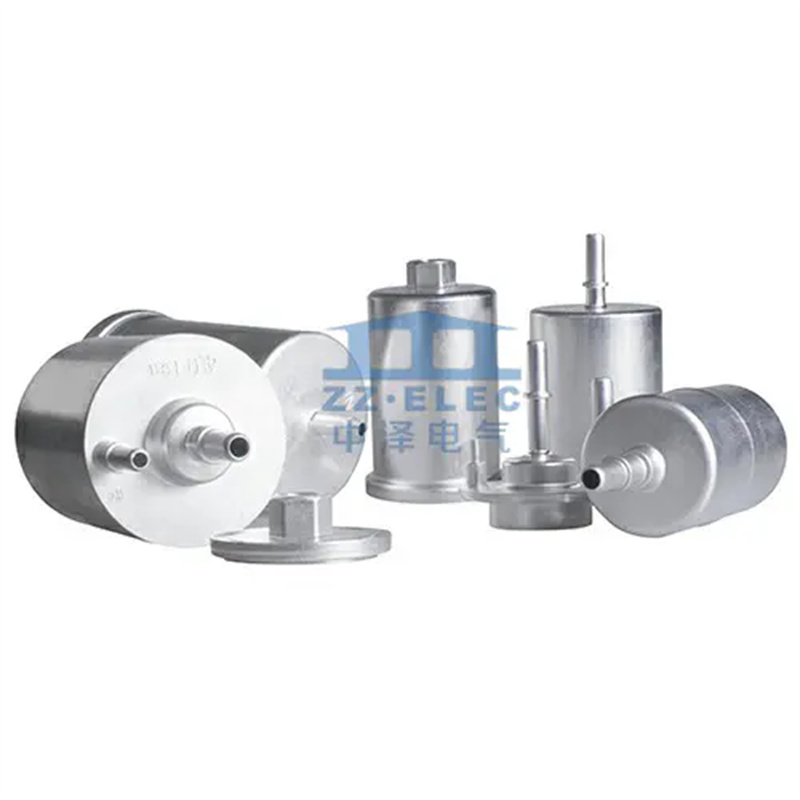Fuel Filter Structure
Fuel filter cover&housingType: nearly every existingMaterial: AL1060We specialize in Aluminum cold extrusion. Fuel filter cover and housing could ...

"From gauze to nano-maze: the quantum evolution of filter materials"
Remember the rough days when early cars used metal mesh to filter fuel? Modern multi-layer gradient fiber structures can accurately capture 5-micron particles in 0.1 seconds, with an accuracy comparable to 100 times that of surgical masks. When synthetic fibers and nano-coatings join forces, this filter material with a thickness less than a coin has an effective filtration area as large as a football field - is the breakthrough in materials science rewriting the definition of fuel cleanliness?
"Precision 'organs' in the body of steel: Who is protecting the structural safety of the filtration system?"
In the harsh environment of the engine compartment, the metal end cap of the fuel filter must withstand a burst pressure of more than 10 bar without deformation, which is equivalent to an adult African elephant standing on an area the size of a stamp. How can a polymer skeleton using laser welding technology maintain an assembly accuracy of 0.01mm under severe vibration? When engineers draw on the design concept of spacecraft fuel systems, are the filter components of civilian vehicles enjoying the benefits of "dimensionality reduction" technology?
"Smart filter that can 'breathe': no more guessing when to replace?"
The latest generation of filter elements with integrated differential pressure sensors can track filtration efficiency in real time like a smart bracelet monitors heart rate. When the built-in algorithm detects a 15% drop in flow, the car networking system will actively remind you to replace it - will this predictive maintenance technology end the era of mechanical maintenance where "filter elements must be replaced every 5,000 kilometers"? In the context of 5G Internet of Things, will each filter become a "health monitoring terminal" for the power system?
"Extreme challenges from -30℃ to 120℃: What materials can withstand the 'test of ice and fire'?"
Vehicles with waxed diesel in the Arctic Circle and off-road vehicles with fuel close to boiling point in the desert are actually using the same source technology solutions. The combination of phase change materials and intelligent temperature control coatings enables modern filter components to calmly cope with extreme temperature differences of 150℃. Does this adaptability imply that future fuel systems will completely break free from the limitations of climate zones?
"Antidote for ethanol gasoline: How to tame corrosive fuels?"
When the ethanol content in biofuels rises to 15%, ordinary rubber seals will age and fail within three months. However, the combination of fluororubber O-rings and ceramic coatings can easily cope with this chemical attack. At the crossroads of energy transformation, have material engineers prepared "customized protective clothing" for various alternative fuels?
"Fatigue test of 500,000 pulses: Which structure will have the last laugh?"
In a laboratory simulating the working state of an engine, high-end filter components are undergoing pulse tests equivalent to 12 laps around the earth. The buffer cavity designed with topological optimization disperses the fluid impact force throughout the structure - is this bionic design derived from cardiovascular stents creating a new record for the durability of the filtration system?
"Green disassembly revolution: Is the discarded filter element garbage or a "mineral deposit"? "
Through low-temperature pyrolysis technology, the metal parts of an ordinary fuel filter can be recycled by 95%, and the plastic part can also be converted into recycled raw materials. When the EU includes filters in the mandatory catalog of circular economy, will this "full life cycle green design" become a new ticket to industry access?
"Graphene filter: Will fuel filters need to be replaced in the future?"
The self-cleaning graphene filter membrane in the laboratory can achieve continuous regeneration with the assistance of an electrostatic field. Once this breakthrough technology matures, does it mean that the dream of "lifetime filter replacement-free" will soon become a reality? As the wave of electrification sweeps the world, this self-evolutionary ability of traditional fuel systems may be writing a new chapter in internal combustion engine technology.
From material innovation in the microscopic world to intelligent interconnection of macroscopic systems, the technological revolution of fuel filter components is still accelerating. When energy transformation and digital revolution are superimposed, are these inconspicuous "engine guards" brewing a leapfrog technological mutation? The answer may be hidden in the filter membrane full of nano-scale pores, waiting for the industry to discover and release.